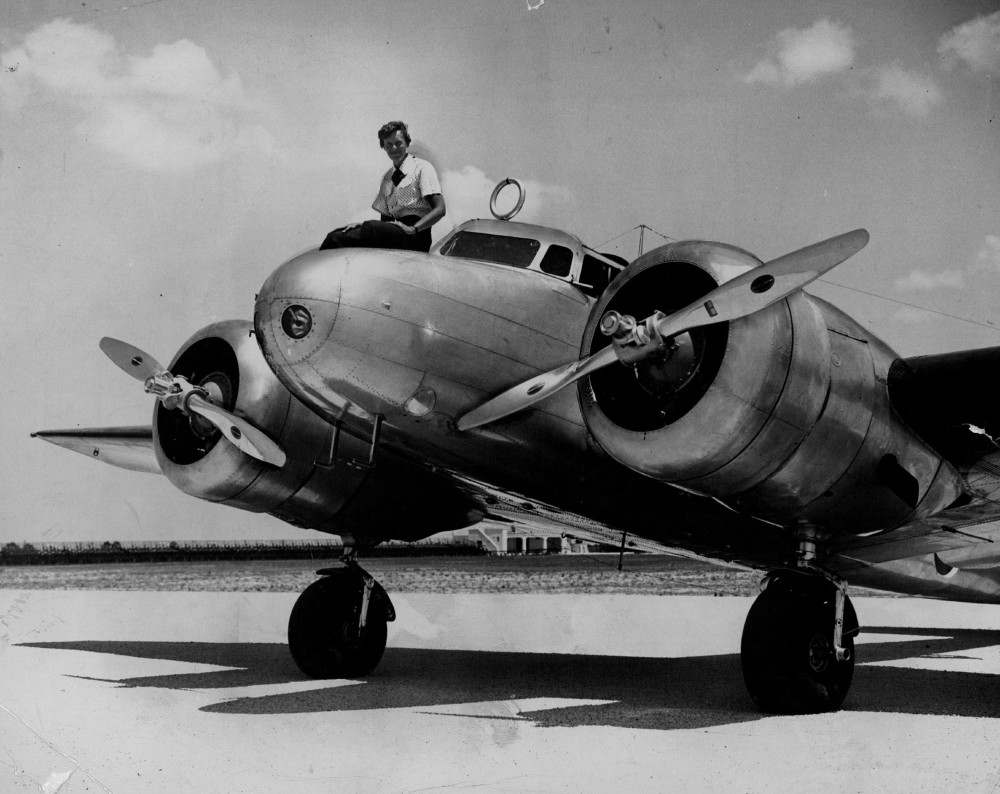By Joe Blackstock
Inland Valley Daily Bulletin, Calif.
The “girls” who participated in the first women’s cross-country air race in 1929 realized there was a lot more at stake than just $25,000 in prizes.
The race, which crossed the skies of the Inland Empire, was dubbed “the Powder Puff Derby” by Will Rogers. Jokes abound from their male counterparts, many of whom believed that women did not possess the capabilities or judgment to handle as complicated a machine as an airplane.
Even in the Roaring 20s, women’s rights still had not yet come a long way, baby.
“The men, you know, have been somewhat worried about such a long flight for us, and they seem to have visions of us smashing up all over the countryside,” said Amelia Earhart, who competed in the race.
“So the thing for us to do is to prove that their fears have been foolish.”
Eighteen fliers competed in the nine-day race from Clover Field in Santa Monica to Cleveland with Louise Thaden, quite possibly as fine a pilot as the more-famous Earhart, winning the first prize.
The first day of the race was a short jaunt from the coast to San Bernardino, taking the leaders less than a half-hour.
First there, after only 27 minutes, was the colorful Florence “Pancho” Barnes, a minister’s wife from San Marino who smoked cigars and wore riding pants and a beret.
Years later, her “Happy Bottom Riding Club” bar near Edwards Air Force Base was a 1950s hangout for test pilots. It was featured in the movie, “The Right Stuff.”
On Aug. 18, more than 5,000 lined the newly graded runway in San Bernardino to cheer the arrival of Barnes’ plane and those who followed closely behind.
Most of the planes arrived without incident, although Opal Kunz landed a bit roughly after part of her landing gear collapsed.
For one of the fliers, Gladys O’Donnell of Long Beach, the landing was somewhat of a homecoming. She had attended a year of high school in San Bernardino and had worked as a cook at a ranch in Cajon Pass.
She was third to finish the first leg of flying.
In those far-less-politically correct times, the newspaper accounts focused more on the participants than their flying achievements.
“Women may be fliers, but they’re women after all,” wrote James B. Lindsley in the San Bernardino Daily Sun. “This was conclusively demonstrated yesterday as the pilots … were summoned to have their pictures taken.
“‘Just a minute,’ was the invariable response. Then out came the compact boxes and lipsticks and only after their application would the girls consent to face the camera.”
The contestants were wined and dined at a banquet that night at the California Hotel and then viewed the ironically named motion picture, “Flying Fools.”
Then things became a bit tense.
Late in the night, Barnes fanned the flames of revolt among the fliers objecting to being required to stop midway on the next day for a refueling stop in dusty little Calexico on the way to Phoenix.
Barnes and others with heavier aircraft refused to continue because the sandy Calexico strip was inadequate to handle their planes.
Hasty negotiations by phone at 2 a.m. finally resulted in the agreement to fly directly to Yuma rather than Calexico, for refueling.
The planes left San Bernardino in the morning but tragedy struck later in the afternoon. Marvel Crosson, who had previously held women’s world endurance and altitude records, crashed and died 30 miles east of Yuma.
After arriving at Phoenix, one of the competitors, Clare Fahy, claimed sabotage when she said two struts on her plane were cut.
One other competitor said oil was placed in her gas tank in San Bernardino.
While charges of conspiracy were never substantiated, the discussion about them as well as Crosson’s death once again brought out their male critics.
One headline is reported to have said, “Women Have Conclusively Proven They Cannot Fly.”
“Women have been dependent on men for guidance for so long that when they are put to their own resources, they are handicapped,” Texas oilman J.D. Halliburton was quoted as saying. “Stop the race, for the sake of the women.”
More determined than ever, the competitors continued on to Cleveland, with 14 actually completing the entire route.
Thaden won in an elapsed flying time of 20 hours and two minutes, averaging 135 mph. O’Donnell was second and Earhart third.
Barnes never made it any farther than El Paso where she was forced down. In landing, her plane struck a Chevrolet touring car that was driven on the runway by an over-enthusiastic spectator.
After the race’s end, Thaden presented the trophy she received to Crosson’s family.














































































































































































































































































































































































